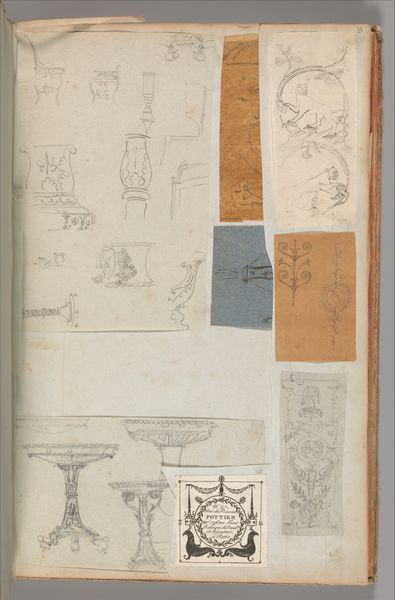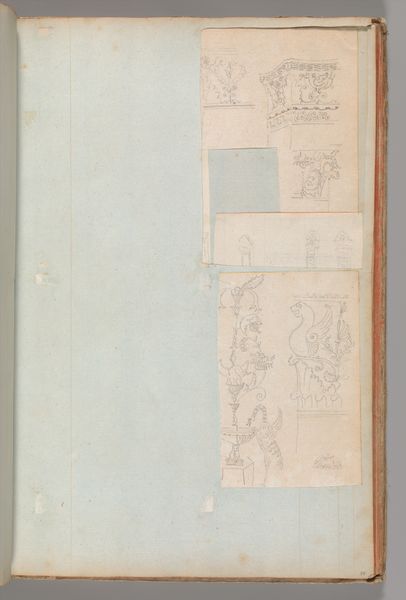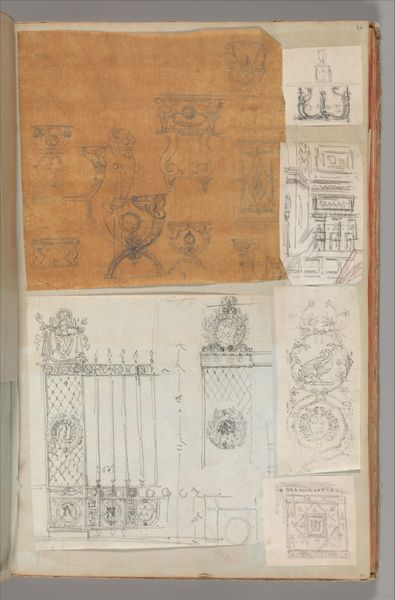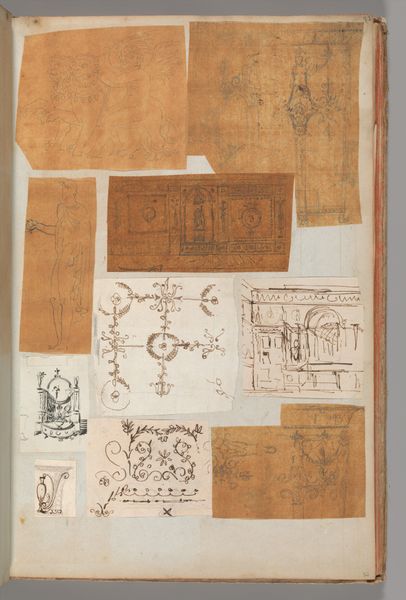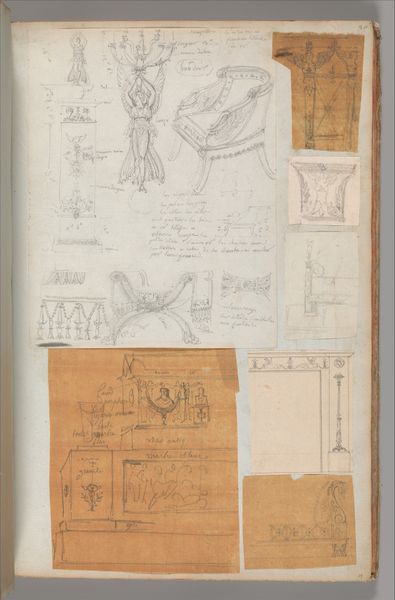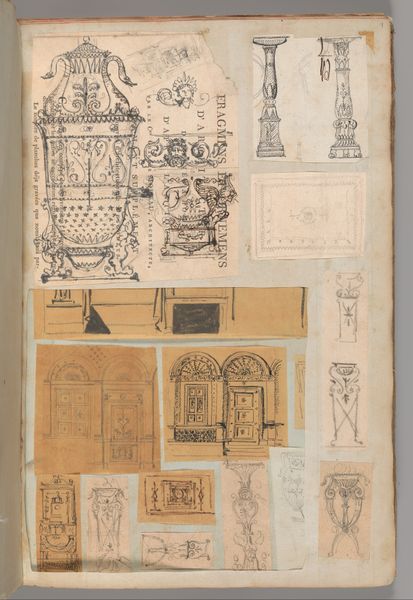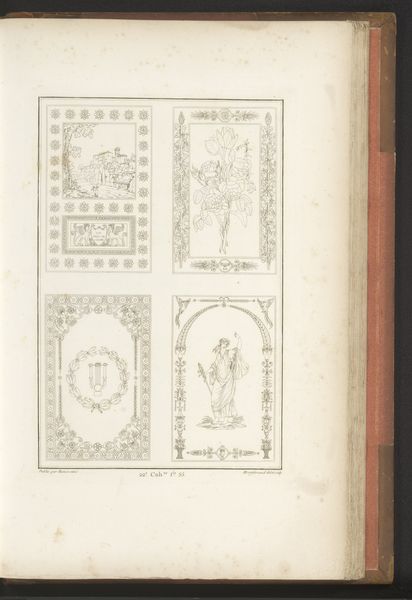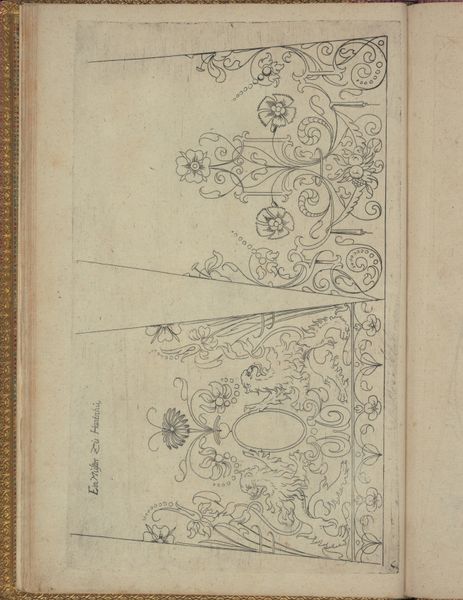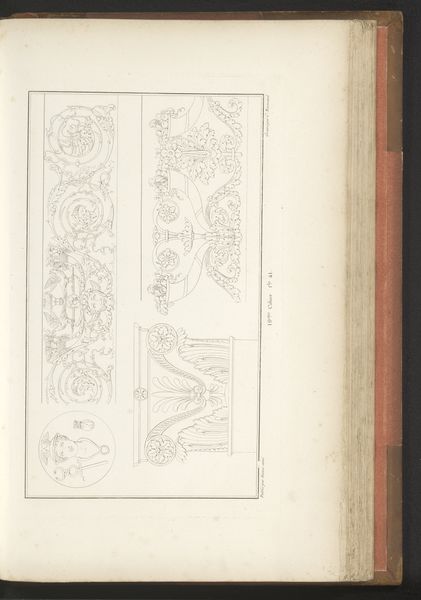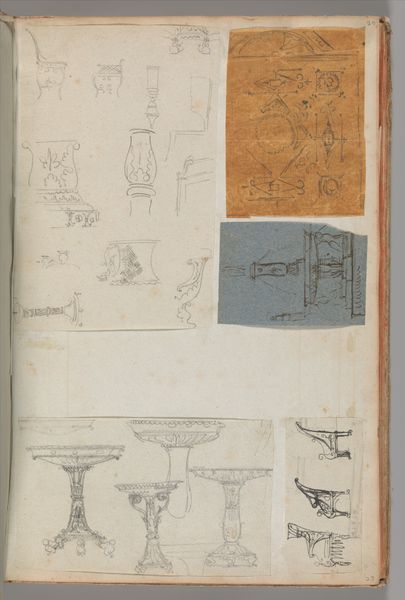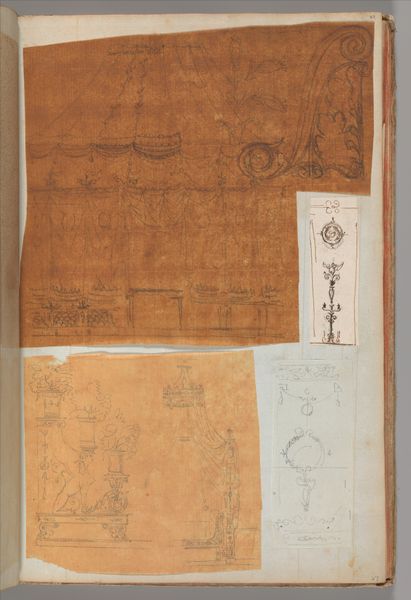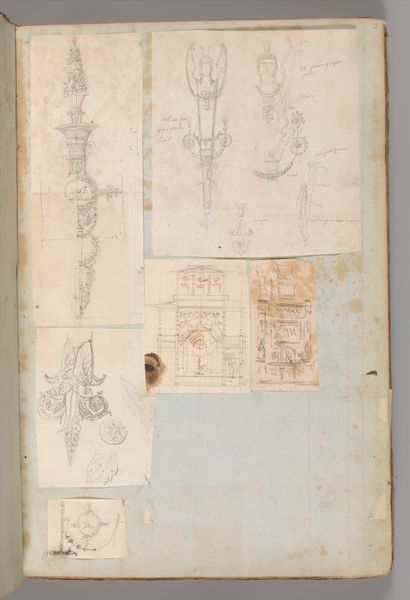
Page from a Scrapbook containing Drawings and Several Prints of Architecture, Interiors, Furniture and Other Objects 1795 - 1805
0:00
0:00
drawing, print, architecture
#
drawing
#
neoclacissism
# print
#
architecture
Dimensions: 15 11/16 x 10 in. (39.8 x 25.4 cm)
Copyright: Public Domain
Curator: Ah, let's delve into this intriguing scrapbook page. It features drawings and prints of architecture, interiors, furniture, and various objects, all likely from somewhere between 1795 and 1805. Charles Percier is the artist. Editor: It’s a mood board for the late 1700s, no? Bits of grandeur, flashes of... morbidity? I'm pulled in by the detailed etchings of ornate urns and these bizarre figures that almost look like gargoyles, mixed with death's head imagery. Curator: Percier, a key figure in the Neoclassical movement, certainly had a keen eye for the grandiose, as you say, and how it all connects back to symbolic representation. Think about those urns - ancient vessels re-imagined for contemporary high society and infused with classical symbolism. And those figures and skulls that have gothic undertones feel deliberately archaic, all at once drawing on ancient themes and mythologies while foreshadowing something darker that will play out as the century turns and European war intensifies. Editor: I love that juxtaposition. Like he's remixing styles, pointing to their origins. I read a real tension here, especially because the architecture, however well-laid out, also feels crammed and almost...unrealizable. They appear very self-consciously stylized, theatrical even. And it's a scrapbook - personal. Are these preparatory drawings? Daydreams? Curator: Absolutely! Scrapbooks like these were often working documents. Percier’s studio was deeply involved in interior decoration, from royal palaces to state buildings. These images might be designs for metalwork, furniture or entire facades - an investigation of form that later ends up monumentalized. You see the rigor of line, almost as if he's mapping the unconscious impact of an interior design. Editor: So, the decorative arts of the day carried all that weight? That skull wasn't just ornamentation! But even if you consider it symbolic shorthand for human ephemerality, what a way to consider death every time you sit down on a specific kind of Neoclassical chair! I feel this weird jolt through history now, like I just touched an electrified doorknob of the 18th century subconscious. Curator: Perhaps, that is the key. We, now, get to experience the intimacy of that electric charge across centuries, to feel through these forms and figures what was bubbling beneath the surface of society as they prepared for the changes to come. Editor: And the joy of seeing what might have just been idle doodles take on a life of their own across history.
Comments
No comments
Be the first to comment and join the conversation on the ultimate creative platform.
